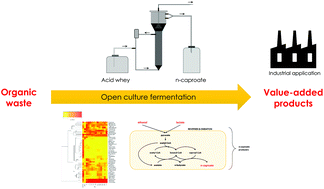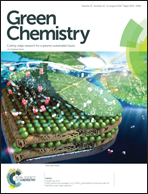Exploiting the real wastewater potential for resource recovery – n-caproate production from acid whey†
Abstract
In light of an increasing demand for energy and sustainable development, bioenergy production is a must. A carboxylate platform-based bioprocess now enables the conversion of organic waste into a valuable bioproduct via open culture fermentation due to a complex microbial activity. Caproic acid is one of the promising products that can be further processed into liquid biofuels. In this study we have shown stable, long-term production of n-caproate from acid whey by shaping the reactor microbiome in a UASB bioreactor. The reactor was operated at pH 5.5 with gradually decreasing hydraulic retention time. The results showed acceleration of n-caproate formation and the highest average n-caproate production rate that lasted for 37 days was 134.3 ± 30.9 mmolC L−1 d−1 (0.11 g L−1 h−1) (with a median of 146.1 mmolC L−1 d−1) and specificity between 58 and 83% (with a median of 79%). Microbiological studies showed the prevalence of fermentative microorganisms from the families Coriobacteriaceae, Ruminococcaceae and Prevotellaceae that are the likely agents for lactose and lactate to n-caproate conversion. A flow cytometry based evaluation of the reactor microbiome demonstrated the inherent heterogeneity of microbial subpopulations in terms of microbial activity at different points of fermentation.



 Please wait while we load your content...
Please wait while we load your content...